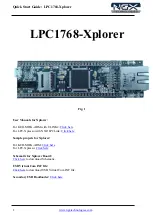AN685
Rev. 0.4
7
Figure 5 and Figure 6 demonstrates the 50
coplanar
transmission line and the
GND metal-filled sections on the
RF part of the Si4455-LED-434 (Si4455CLED-434) pico board PCB. The top and bottom layers are shown,
respectively. Examples for the 50
grounded coplanar trace dimensions are shown in Table 1.
Figure 5. Ground Poured Sections with PCB Vias around the Matching Network—Top Layer
Figure 6. Ground Poured Sections with PCB Vias—Bottom Layer

















